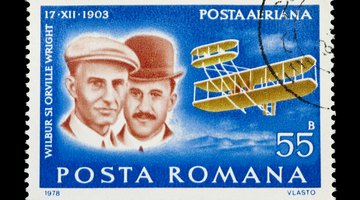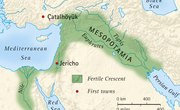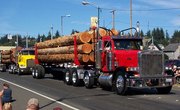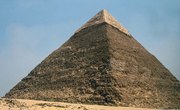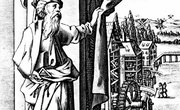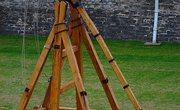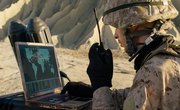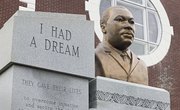Introduction
On December 17, 1903, Wilbur and Orville Wright successfully flew the first heavier-than-air, powered aircraft. Although they had tested their theories about air travel with non-powered kites and gliders, this date marked the first time for an engine-powered flight. The successful demonstration inspired others to build on the Wright brothers' experiments, and the airplanes we have today still use some of their basic design principles.
Basic Structure
The first airplane was made of wooden beams with canvas stretched over them. The plane had two horizontal wings that were parallel to each other. Behind the wings were two propellers that pushed the plane through the air. The plane also included two rudders, which the pilot could control by using a system of pulleys. The pilot crouched on the bottom wing in order to fly the plane; in later versions, the Wright brothers built a seat for the pilot.
Airfoil
Crucial to the design of the first airplane was the concept of the airfoil, or wing. According to Bernoulli's Principle, air flowing over the curved top of the wing has lower pressure than the air flowing under the straight wing bottom. The low pressure on top generates a lifting force that makes the plane rise on takeoff.
Wings and Steering
In addition to the airfoil concept described above, the Wright brothers conceived the idea of wing warping, in which the pilot can "warp" or twist the wings so that one wing has more lift than the other. Wing warping enabled the pilot to steer the plane more effectively.
Engine and Propellers
The Wrights were the first to realize that a propeller was really just a wing rotating on an axis. This understanding enabled them to experiment with propellers until they discovered the best design. The Wrights also realized that they needed a specialized engine to power the propellers on their aircraft. They tried to buy an engine, but none of the producers would build one according to their specifications. Undaunted, they built one themselves (along with the help of Charles Taylor). It was a four-cylinder model with no carburetor, no fins and barely enough horsepower to lift the plane off the ground. Nevertheless, it did the job, and the Wright brothers went down in history as the first pilots to successfully fly a controlled aircraft.
Related Articles
References
Writer Bio
Keren (Carrie) Perles is a freelance writer with professional experience in publishing since 2004. Perles has written, edited and developed curriculum for educational publishers. She writes online articles about various topics, mostly about education or parenting, and has been a mother, teacher and tutor for various ages. Perles holds a Bachelor of Arts in English communications from the University of Maryland, Baltimore County.

